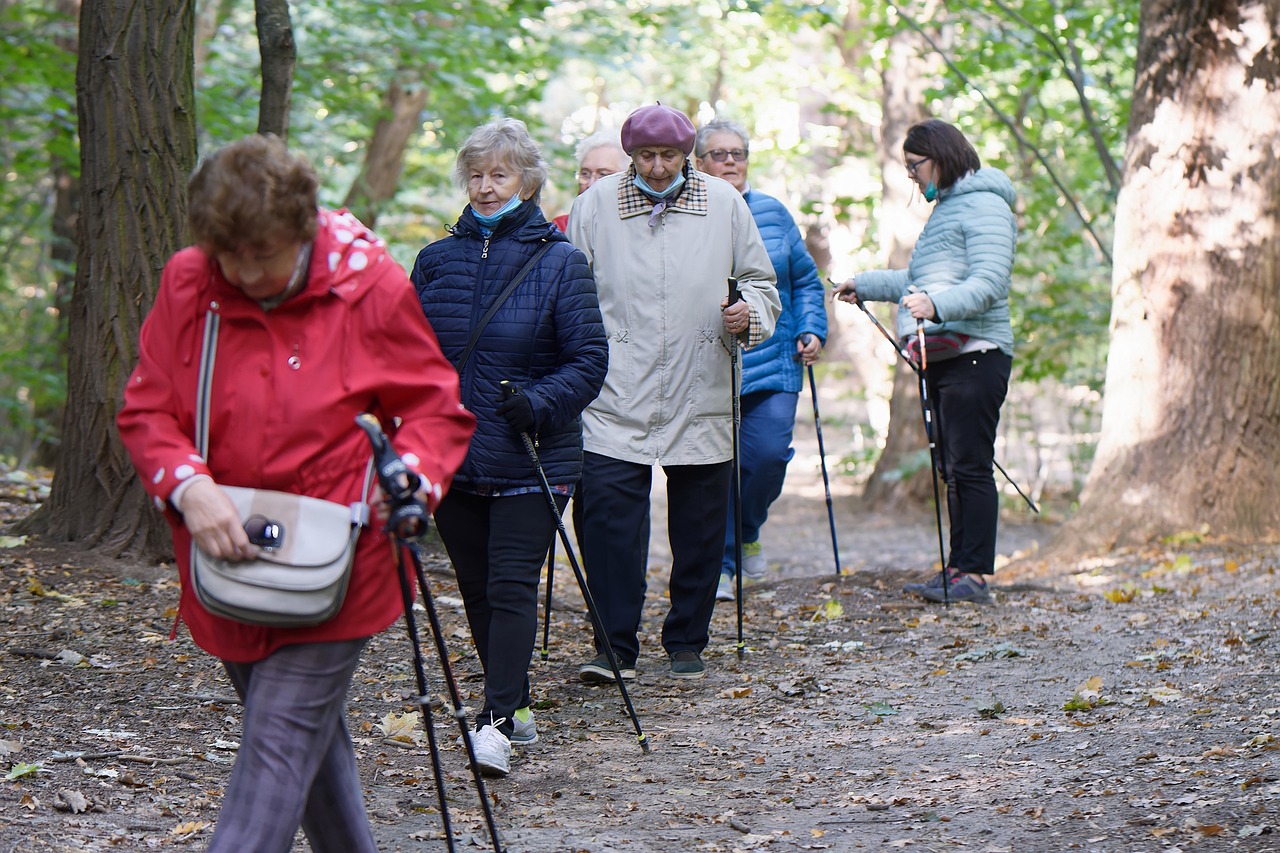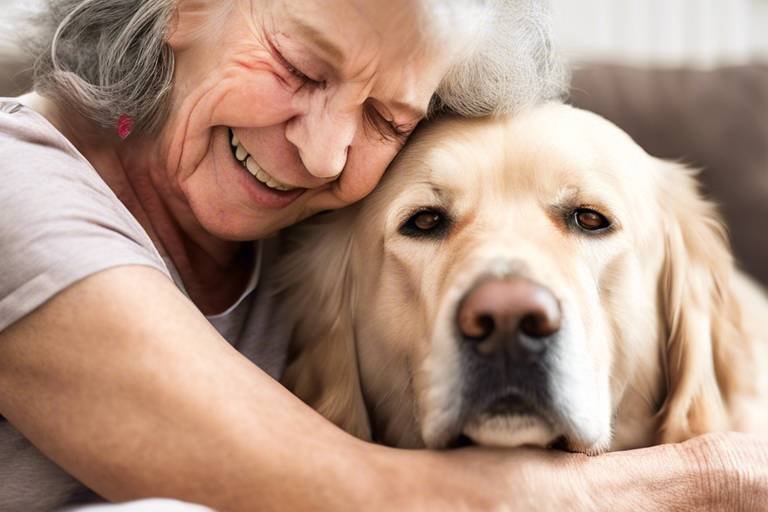How to Help Your Senior Pet Cope with Loss
Loss is a heart-wrenching experience, not just for us humans, but for our beloved pets as well. When a senior pet loses a companion, whether it’s another pet or even a human family member, the impact can be profound. Just like us, pets have emotions, and they experience grief in ways that are sometimes subtle yet deeply felt. So, how can you help your furry friend navigate this tough time? In this article, we’ll explore effective strategies that focus on emotional, physical, and environmental adjustments to ease your senior pet’s transition. By understanding their needs and providing the right support, you can help them cope with their loss and find comfort in their new reality.
It’s essential to recognize that pets experience grief similarly to humans. They may not be able to articulate their feelings, but their behavior can speak volumes. When a pet loses a companion, they may go through a range of emotions, including confusion, sadness, and even anxiety. Understanding these feelings is the first step in providing the right support. Just as we might seek comfort from loved ones during our times of sorrow, our pets also need reassurance and love. By being attentive to their emotional state, you can help them feel less alone in their grief.
Identifying the behavioral changes in your senior pet is crucial during this time. Common signs of grief can manifest in various ways, and being aware of these signs can help you respond appropriately. Some of the most noticeable changes include:
- Changes in Appetite: A grieving pet may eat less or show disinterest in food.
- Lethargy: They might seem more tired than usual, opting to sleep rather than play.
- Altered Social Interactions: Your pet may withdraw from social activities or become overly clingy.
These changes can indicate that they are struggling with loss, and your support is vital during this period.
Watch for shifts in your pet's usual behavior, such as withdrawal or increased clinginess. For instance, if they suddenly want to stay close to you all the time, it may be their way of seeking comfort. On the other hand, if they isolate themselves, it could be a sign that they are feeling overwhelmed. These behavioral changes can signal emotional distress and the need for extra attention and care. A little extra love and patience can go a long way in helping your pet feel secure.
If your senior pet suddenly loses interest in their favorite activities, such as playing fetch or going for walks, it may indicate they are grieving. It’s essential to encourage gentle engagement, even if it means starting with short, low-energy activities. Gradually reintroducing their favorite routines can help them reconnect with their joyful side. Think of it like coaxing a shy child out to play; sometimes, a little encouragement is all they need to rediscover joy.
Grieving pets often experience disrupted sleep patterns. You might notice them sleeping more than usual or having trouble settling down at night. Monitoring their rest can provide insight into their emotional state. Creating a comforting environment is crucial; consider adding their favorite blanket or toy to their sleeping area. This familiarity can help them feel safe and secure, making it easier for them to find rest.
Grief can also impact a pet's physical health. It’s essential to monitor their overall well-being and consult a veterinarian if you notice significant changes. A sudden decline in health can be alarming, and it’s always better to err on the side of caution. Regular check-ups can ensure that your pet remains healthy during this emotional turmoil.
Adjusting your home environment can provide immense comfort to a grieving pet. Familiar scents, favorite toys, and quiet spaces can help them feel secure during this difficult time. Consider creating a special area where they can retreat when they need some alone time. This safe space can be a cozy corner with their favorite blanket, surrounded by items that remind them of their lost companion.
Keeping a consistent daily routine can provide stability for your senior pet. Regular feeding, walks, and playtime can help them adjust to their new reality. Think of it as providing a steady anchor in a turbulent sea; routines can give them a sense of normalcy amidst the chaos of grief. Plus, maintaining these routines can also benefit you, as it helps keep you engaged and focused on your pet's needs.
Facilitating social interactions with other pets or people can help alleviate feelings of loneliness. Gradually introducing new companions can promote healing and companionship for your grieving pet. Just like humans often find solace in the company of friends during tough times, pets can also benefit from social connections. However, be mindful of their pace; some pets may need more time than others to adjust to new relationships.
Q: How long does grief last in pets?
A: The duration of grief can vary significantly from one pet to another. Some may bounce back within weeks, while others may take months. It’s essential to be patient and supportive throughout the process.
Q: Should I get another pet to help my grieving pet?
A: While introducing a new pet can sometimes help, it’s crucial to ensure your grieving pet is ready for a new companion. Take your time and observe their behavior before making any decisions.
Q: What should I do if my pet shows signs of severe depression?
A: If your pet exhibits severe signs of depression or significant changes in behavior, it’s vital to consult a veterinarian. They can offer guidance and support tailored to your pet’s specific needs.

Understanding Grief in Pets
This article explores effective strategies to support senior pets dealing with the loss of a companion, focusing on emotional, physical, and environmental adjustments to ease their transition.
Just like humans, pets experience grief when they lose a companion. It's a profound emotional response that can manifest in various ways, making it essential for pet owners to recognize and understand these feelings. Imagine how you would feel if you lost a close friend or family member; your pet feels that same sense of loss, confusion, and sadness. They may not express it in words, but their behaviors can tell a story of their emotional state. Understanding this grief is the first step in providing the necessary support.
Pets, especially senior ones, may not cope with loss as well as younger animals. Their routines, which often include interactions with their companions, are disrupted, leading to feelings of loneliness and anxiety. Recognizing the signs of grief can help you provide the right support and comfort. Some common signs of grief in pets include:
- Withdrawal: Your pet may isolate themselves, spending more time alone.
- Increased clinginess: Conversely, they may become overly attached, following you around the house.
- Changes in appetite: A grieving pet might eat less or show disinterest in food.
- Altered sleeping patterns: They may sleep more or have trouble settling down.
Understanding these signs is crucial. It's not just about noticing changes; it's about recognizing that your pet is going through a challenging time. By being observant and responsive, you can help your furry friend navigate their grief. Just as we seek comfort from those around us during tough times, your pet needs your support, love, and attention more than ever.
Moreover, it's important to remember that grief is a personal journey. Each pet will handle loss differently, and their timeline for healing will vary. Some may bounce back relatively quickly, while others might take longer to adjust. Patience is key. Your role is to provide a safe and loving environment where they can express their feelings without judgment.
| Signs of Grief | Description |
|---|---|
| Withdrawal | Spending more time alone and avoiding interaction. |
| Clinginess | Following you around and seeking constant attention. |
| Changes in Appetite | Eating less or showing disinterest in food. |
| Altered Sleeping Patterns | Sleeping more than usual or having trouble settling down. |
Understanding grief in pets is not just about recognizing the signs; it's also about being proactive in providing the support they need. This can include maintaining their routine, offering extra cuddles, and ensuring they have a comfortable space to process their feelings. Remember, your love and attention can make a world of difference during this difficult time.
Identifying the behavioral changes in your senior pet is crucial. Common signs include changes in appetite, lethargy, and altered social interactions, indicating they may be struggling with loss.
Watch for shifts in your pet's usual behavior, such as withdrawal or increased clinginess. These changes can signal emotional distress and the need for extra attention and care.
If your senior pet suddenly loses interest in their favorite activities, it may indicate they are grieving. Encouraging gentle engagement can help them reconnect with their joyful routines.
Grieving pets often experience disrupted sleep patterns. Monitoring their rest can provide insight into their emotional state and help you create a comforting environment for them.
Grief can impact a pet's physical health. It's essential to monitor their overall well-being and consult a veterinarian if you notice significant changes.
Adjusting your home environment can provide comfort to a grieving pet. Familiar scents, favorite toys, and quiet spaces can help them feel secure during this difficult time.
Keeping a consistent daily routine can provide stability for your senior pet. Regular feeding, walks, and playtime can help them adjust to their new reality.
Facilitating social interactions with other pets or people can help alleviate feelings of loneliness. Gradually introducing new companions can promote healing and companionship for your grieving pet.
Q: How long does a pet typically grieve?
A: The duration of grief varies significantly among pets. Some may take weeks, while others could take months. It's essential to be patient and supportive throughout their healing process.
Q: Should I get another pet to help my grieving pet?
A: Introducing a new pet can help, but it’s important to wait until your grieving pet shows signs of healing. Rushing into this decision might add more stress to their emotional state.
Q: How can I help my pet cope with grief?
A: Providing a stable routine, extra love, and attention, and maintaining familiar environments can greatly assist your pet in coping with their loss.

Signs Your Pet is Grieving
When a beloved companion passes away, it can be a heart-wrenching experience not just for you, but also for your senior pet. Just like us, pets can experience a range of emotions, and grief is one of them. Understanding the signs that your pet is grieving is crucial in providing the support they need during this challenging time. You may notice a variety of behavioral changes that indicate your furry friend is struggling to cope with the loss. These changes can manifest in several ways, and being aware of them can help you offer the right comfort and care.
One of the most noticeable signs of grief in pets is a change in appetite. If your senior pet suddenly shows less interest in their food or refuses to eat altogether, it could be a sign that they are feeling down. Just like when we lose our appetite due to sadness, pets can experience similar feelings. It's essential to monitor their eating habits closely and consult a veterinarian if the lack of appetite persists for more than a couple of days.
Another common indicator is lethargy. You might find your once-active pet spending more time sleeping or lounging around the house. This shift in energy can be alarming, especially if your pet was previously playful and engaged. They may seem less motivated to join in on family activities or go for walks, which can be a clear signal that they are mourning the loss of their companion. In such cases, it’s important to be patient and gentle, encouraging them to engage in light activities when they feel up to it.
Additionally, altered social interactions can be a significant sign of grief. If your pet has become more withdrawn or is seeking more attention than usual, it’s a clear indication that they are struggling emotionally. You might observe them looking for their lost companion or even calling out for them. These behaviors can be heartbreaking, but they also highlight the deep bond pets form with one another. Providing them with extra love and attention during this time can help them feel more secure.
To further illustrate the signs of grief in pets, let’s take a look at some common behavioral changes:
| Behavioral Change | Description |
|---|---|
| Loss of Interest in Activities | Your pet may stop engaging in their favorite games or walks, indicating a lack of joy. |
| Changes in Sleeping Patterns | Pets may sleep more than usual or have difficulty settling down for a nap. |
| Increased Clinginess | Some pets may become more attached to you, seeking comfort in your presence. |
| Vocalization Changes | Pets may bark, meow, or whine more frequently, expressing their distress. |
It’s vital to remember that every pet is unique, and their grieving process may differ. Just as we all cope with loss in our own ways, so do our furry friends. By being observant and responsive to these signs, you can create a nurturing environment that helps your senior pet heal. The journey of grief is not easy, but with your love and support, they can find their way back to a place of comfort and joy.
Q: How long does it take for a pet to grieve?
A: The grieving process can vary significantly from one pet to another. Some pets may show signs of grief for a few days, while others might take weeks or even months to adjust. It's essential to be patient and provide consistent support during this time.
Q: Should I consider getting another pet during this time?
A: Introducing a new pet too soon can sometimes complicate the grieving process. It’s best to wait until your senior pet has adjusted to the loss before considering adding a new companion to the family.
Q: What can I do to help my grieving pet?
A: Spend extra time with your pet, maintain their daily routines, and encourage gentle play. Creating a calm and comforting environment can also help them feel more secure.
Behavioral Changes
When your senior pet experiences the loss of a companion, it’s not just their heart that feels heavy; their entire demeanor may shift in ways that are both subtle and profound. As a loving pet owner, it’s crucial to observe these closely, as they can be your best indicators of how your furry friend is coping with their grief. You might notice that your once playful pup or curious kitty is now more withdrawn, spending long hours in their favorite corner, seemingly lost in thought. This withdrawal can be a sign that they are struggling to process their emotions and may need your support more than ever.
Conversely, some pets may become increasingly clingy, following you around the house as if they are trying to fill the void left by their lost companion. This behavior can be both heartwarming and heartbreaking; it’s their way of seeking comfort in your presence. It’s essential to recognize that these changes are not just temporary quirks but significant emotional responses that require your attention and understanding.
Moreover, you may observe alterations in their usual patterns of interaction with you and other pets. For instance, a dog that used to greet you with enthusiastic tail wags may now merely glance your way, while a cat that once enjoyed playful tussles might retreat to solitude. These shifts can manifest as:
- Decreased Playfulness: If your pet is not engaging in their favorite games, it could be a sign of their grief.
- Increased Aggression: Some pets may lash out or display aggression due to confusion and emotional turmoil.
- Vocalization Changes: Uncharacteristic whining or meowing can indicate distress or a need for comfort.
Understanding these behavioral changes is crucial for providing the right support. By being observant and patient, you can help your senior pet navigate through this challenging emotional landscape. Remember, they are looking to you for guidance and reassurance. Offering gentle affection, maintaining a calm environment, and engaging them in light activities can help bridge the gap during this tough time. It’s all about creating a safe space where they can express their feelings and gradually heal.
Q: How long does it take for a pet to grieve?
A: Just like humans, the grieving process varies from pet to pet. Some may show signs of grief for a few weeks, while others might take months. Patience is key.
Q: Should I get another pet to help my grieving pet?
A: Introducing a new pet can be beneficial, but it should be done gradually and only when your grieving pet shows signs of readiness to accept a new companion.
Q: Can grief affect my pet's physical health?
A: Yes, prolonged grief can lead to changes in appetite and energy levels, impacting your pet’s overall health. Regular vet check-ups are essential during this time.
Q: How can I comfort my grieving pet?
A: Spend quality time with them, maintain routines, and provide their favorite toys or blankets. Your presence and love are the best comforts.
Loss of Interest in Activities
Have you ever noticed your senior pet just lying around, staring into space instead of engaging in their usual antics? It’s heartbreaking, isn’t it? When pets experience the loss of a companion, they often exhibit a that once brought them joy. This change can be subtle at first, but it’s crucial to pay close attention. Just like us, pets can go through a grieving process, and recognizing these signs can help you offer the support they need.
Imagine your furry friend, who used to dash around the house with a toy in their mouth, now lying on the couch, seemingly indifferent to the world. This behavioral shift can be a clear indication that they are struggling with their emotions. You might notice them skipping their favorite games, ignoring their toys, or even refusing to go for walks. It’s as if their zest for life has dimmed, and they are caught in a cloud of sadness. So, what can you do to help them?
First, it’s essential to gently encourage your pet to engage in activities they once loved. This doesn’t mean forcing them to play or go for a run, but rather creating opportunities for participation without pressure. For example, you could:
- Introduce their favorite toys in a low-key manner.
- Take short walks to reintroduce them to their surroundings.
- Engage in calm play sessions that allow them to set the pace.
Sometimes, pets may need a little nudge to rekindle their interest. You could also consider setting up a cozy play area or a quiet corner where they can feel safe while exploring their toys at their own pace. Remember, patience is key. Just like a flower takes time to bloom, your pet may need time to rediscover their joy.
Additionally, be observant of their reactions. If they show even a flicker of interest, celebrate that moment! A simple wag of the tail or a curious sniff can be a sign that they are beginning to heal. Your encouragement can play a significant role in helping them navigate their grief.
Ultimately, while it’s natural for pets to experience a shift in their interests, your love and support can help them find their way back to happiness. By creating a nurturing environment and gently encouraging them to engage in activities, you can assist your senior pet in coping with their loss and rediscovering the joys of life.
Q: How long does it take for a pet to cope with the loss of a companion?
A: Each pet is unique, and the time it takes to cope can vary. Some may adjust within a few weeks, while others may take months. Be patient and attentive to their needs.
Q: Should I get another pet to help my grieving pet?
A: Introducing a new pet can be beneficial, but it’s essential to wait until your grieving pet shows signs of readiness. Gradually introducing a new companion can provide comfort, but it should be done thoughtfully.
Q: What are some signs that my pet is starting to feel better?
A: Look for increased interest in activities, engagement with toys, and a return to their usual routines. Positive changes in appetite and social interactions are also good indicators.
Changes in Sleeping Patterns
When a beloved companion passes away, the ripple effects can reach deep into the emotional well-being of your senior pet. One of the most noticeable changes you might observe is in their sleeping patterns. Just like us, pets can experience disrupted sleep during times of grief. You may find your furry friend sleeping more than usual, or conversely, they might seem restless and unable to settle down. This fluctuation in sleep can be attributed to a mix of anxiety and sadness that can envelop them after a loss.
It's crucial to monitor these changes closely. For instance, if your pet is sleeping excessively, they may be trying to escape the reality of their grief. On the other hand, if they are pacing or whining at night, this restlessness could indicate that they are struggling to process their emotions. Understanding these patterns can help you provide the right support. Here are some notable signs to look for:
- Increased Sleep Duration: If your pet is spending more time napping or lounging around, it may be a way for them to cope with their feelings.
- Restlessness: If you notice them getting up frequently or appearing agitated, it’s a sign they may be feeling unsettled.
- Changes in Sleeping Locations: Your pet might seek out different spots to sleep, perhaps looking for places that remind them of their lost companion.
Creating a calming sleeping environment can help soothe your grieving pet. Consider placing their bed in a quiet corner of the house where they can feel safe and secure. You might also want to include their favorite blanket or a piece of your clothing to provide comfort through familiar scents. Additionally, maintaining a consistent bedtime routine can reassure them that they are not alone. Gentle petting or soft spoken words can also work wonders in helping them relax and drift off to sleep.
In summary, paying attention to your pet's sleeping patterns is vital during this tough time. By understanding their needs and making small adjustments to their environment, you can help them navigate their grief. Remember, just like us, every pet handles loss differently, and your patience and love will go a long way in helping them heal.
Q: How long can a pet grieve?
A: Grief is a personal journey, and the duration can vary widely among pets. Some may take a few weeks, while others might take months. Pay attention to their behavior and provide support as needed.
Q: Should I get another pet to help my grieving pet?
A: Introducing a new pet can sometimes help, but it's essential to wait until your senior pet shows signs of healing. Rushing into this decision may cause more stress.
Q: How can I tell if my pet is depressed or just grieving?
A: While grieving can look similar to depression, signs of depression may include a lack of interest in food, play, or social interaction over an extended period. If you're concerned, consult your veterinarian.
Physical Health Considerations
This article explores effective strategies to support senior pets dealing with the loss of a companion, focusing on emotional, physical, and environmental adjustments to ease their transition.
Pets experience grief similarly to humans. Recognizing the signs can help you provide the right support and comfort to your senior pet during this challenging time.
Identifying the behavioral changes in your senior pet is crucial. Common signs include changes in appetite, lethargy, and altered social interactions, indicating they may be struggling with loss.
Watch for shifts in your pet's usual behavior, such as withdrawal or increased clinginess. These changes can signal emotional distress and the need for extra attention and care.
If your senior pet suddenly loses interest in their favorite activities, it may indicate they are grieving. Encouraging gentle engagement can help them reconnect with their joyful routines.
Grieving pets often experience disrupted sleep patterns. Monitoring their rest can provide insight into their emotional state and help you create a comforting environment for them.
Grief can take a toll on your pet's physical health, often manifesting in subtle yet significant ways. It's essential to keep a close eye on their overall well-being during this time. For instance, a grieving pet may show signs of stress that can lead to changes in their eating habits or energy levels. Regular check-ins with your veterinarian can help ensure that your pet remains healthy. Here are a few health aspects to monitor:
- Appetite Changes: A decrease or increase in appetite can indicate emotional distress. Make sure to offer their favorite foods and keep mealtimes consistent.
- Weight Fluctuations: Weigh your pet regularly to catch any significant weight loss or gain, which could signal health issues exacerbated by grief.
- Physical Activity: Observe their activity levels. If they seem more lethargic than usual, it may be a sign they need encouragement to move and play.
Additionally, physical symptoms such as vomiting, diarrhea, or excessive grooming can also appear as a response to stress and sadness. If you notice any of these signs, it’s crucial to consult your veterinarian promptly. They can help rule out any underlying health issues and provide guidance on how to best support your grieving pet.
Adjusting your home environment can provide comfort to a grieving pet. Familiar scents, favorite toys, and quiet spaces can help them feel secure during this difficult time.
Keeping a consistent daily routine can provide stability for your senior pet. Regular feeding, walks, and playtime can help them adjust to their new reality.
Facilitating social interactions with other pets or people can help alleviate feelings of loneliness. Gradually introducing new companions can promote healing and companionship for your grieving pet.
Q: How long should I expect my pet to grieve?
A: Just like humans, pets can grieve for different lengths of time. Some may recover within weeks, while others might take months. It's essential to be patient and provide ongoing support.
Q: Should I get another pet to help my grieving pet?
A: Introducing a new pet can be beneficial, but it should be done gradually and only when you feel your senior pet is ready. Monitor their reactions closely.
Q: Can grief affect my pet's physical health?
A: Yes, grief can lead to stress-related health issues. Regular veterinary check-ups are crucial to ensure your pet's health remains stable during this time.

Creating a Supportive Environment
Creating a supportive environment for your senior pet during their time of grief is crucial. Just like us, pets need a sense of security and comfort as they navigate the emotional turmoil of losing a companion. Start by ensuring that their space feels familiar and safe. This can be achieved by keeping their favorite toys, blankets, and beds in the same place. The comforting scent of their belongings can provide a sense of normalcy and help them feel grounded.
Moreover, consider the layout of your home. Is there a quiet corner where your pet can retreat when they feel overwhelmed? A cozy, dimly lit space away from the hustle and bustle can work wonders for a grieving pet. You might also want to enhance this area with soft bedding and a few of their cherished items to create a sanctuary that they can escape to when needed.
Another important aspect is to maintain their daily routines. Pets thrive on routine, and keeping a consistent schedule can provide a comforting structure in their lives. Regular feeding times, walks, and play sessions can help your senior pet adjust to their new reality. You may even want to create a simple daily schedule that outlines these activities. Here's a quick example:
| Time | Activity |
|---|---|
| 8:00 AM | Breakfast |
| 9:00 AM | Walk |
| 1:00 PM | Playtime |
| 5:00 PM | Dinner |
| 8:00 PM | Quiet Time |
Additionally, encouraging social interaction is vital. While your pet may be feeling lonely, gently introducing them to other pets or people can help alleviate some of that isolation. Be patient and allow your pet to set the pace. You might find that a new furry friend can bring a spark of joy back into their life, helping them to heal and adapt.
Finally, don’t underestimate the power of your presence. Spend extra time with your senior pet, offering them affection and reassurance. Your love and attention can be the best medicine during this difficult time. Remember, as they navigate their grief, your support can make all the difference in helping them feel loved and secure.
- How long does a pet grieve? - Grieving duration varies by individual pet, but it can last from a few weeks to several months.
- What are the best ways to comfort a grieving pet? - Providing familiar items, maintaining routines, and offering extra affection can help comfort your pet.
- Should I introduce a new pet during this time? - It’s best to wait until your pet shows signs of healing before introducing a new companion.
Maintaining Routines
This article explores effective strategies to support senior pets dealing with the loss of a companion, focusing on emotional, physical, and environmental adjustments to ease their transition.
Pets experience grief similarly to humans. Recognizing the signs can help you provide the right support and comfort to your senior pet during this challenging time.
Identifying the behavioral changes in your senior pet is crucial. Common signs include changes in appetite, lethargy, and altered social interactions, indicating they may be struggling with loss.
Watch for shifts in your pet's usual behavior, such as withdrawal or increased clinginess. These changes can signal emotional distress and the need for extra attention and care.
If your senior pet suddenly loses interest in their favorite activities, it may indicate they are grieving. Encouraging gentle engagement can help them reconnect with their joyful routines.
Grieving pets often experience disrupted sleep patterns. Monitoring their rest can provide insight into their emotional state and help you create a comforting environment for them.
Grief can impact a pet's physical health. It's essential to monitor their overall well-being and consult a veterinarian if you notice significant changes.
Adjusting your home environment can provide comfort to a grieving pet. Familiar scents, favorite toys, and quiet spaces can help them feel secure during this difficult time.
Maintaining a consistent daily routine is one of the most effective ways to provide stability for your senior pet during their grieving process. Just like humans, pets thrive on predictability, and when they experience the loss of a companion, their world can feel chaotic and disorienting. By sticking to a regular schedule for feeding, walks, and playtime, you can help your furry friend regain a sense of normalcy.
For instance, if your pet is used to being fed at a specific time, continue that practice. This simple act can provide them with comfort and reassurance, reminding them that some things remain unchanged. Moreover, incorporating activities they once enjoyed can encourage them to engage with life again.
Here’s a quick breakdown of how to maintain those routines:
| Routine Activity | Suggested Time | Notes |
|---|---|---|
| Feeding | 8:00 AM & 6:00 PM | Stick to their usual diet; consider adding comfort food. |
| Walks | 9:00 AM & 5:00 PM | Keep walks short and gentle; allow exploration. |
| Playtime | 3:00 PM | Engage with their favorite toys; keep it low-key. |
Additionally, you might want to incorporate some quiet time together. This could mean snuggling on the couch or simply sitting beside them. Your presence alone can be incredibly soothing. Remember, it's about finding a balance between maintaining routines while being sensitive to their emotional needs. If they seem less enthusiastic, don’t push them too hard—just be there for them.
In essence, maintaining routines is like providing a lifeline to your pet. It gives them something to hold onto in a time of uncertainty and loss. With your love and support, they can navigate this tough journey and gradually find their way back to joy.
- How long does a pet grieve? - The grieving process can vary widely among pets, lasting from a few days to several weeks or even months.
- Should I get another pet while my senior pet is grieving? - It's best to wait until your senior pet has adjusted to their loss before introducing a new companion. This ensures they can bond with a new pet positively.
- What can I do to help my pet feel better? - Spend extra time with them, maintain routines, and consider consulting a vet if their behavior changes significantly.
Encouraging Social Interaction
When a senior pet is grieving, it can feel like they’re trapped in a fog of loneliness. Just like us humans, pets thrive on companionship, and during tough times, social interaction becomes even more crucial. Think of it as a warm blanket on a cold night—comforting and essential. Encouraging your pet to engage with others can help lift their spirits and ease the weight of their sorrow.
One of the first steps to fostering social interaction is to assess your pet’s comfort level with other animals and people. Some pets might be more social than others, so it’s essential to introduce new companions gradually. Start by allowing your pet to interact with familiar friends or family members. This can create a safe space for them to express their emotions without the overwhelming pressure of new encounters. You can also consider inviting over a calm, friendly dog or cat that your pet has previously interacted with. This familiar presence can spark joy and remind your pet of the good times they shared with their lost companion.
Additionally, arranging playdates can be a wonderful way to encourage socialization. If your pet enjoys the company of other animals, consider setting up playdates with other pets in your area. Make sure to monitor their interactions closely to ensure they’re comfortable and enjoying themselves. If your senior pet seems hesitant, don’t force the interaction. Instead, let them approach at their own pace, just like how you would handle a shy friend at a party. You can also take advantage of local pet-friendly events or parks, where your pet can meet new friends in a relaxed environment.
Moreover, don’t underestimate the power of human interaction. Spending quality time with your pet can significantly boost their mood. Simple activities like cuddling on the couch, gentle grooming sessions, or even talking to them can help them feel loved and supported. It’s like giving them a reassuring hug when they need it most. You might even consider enrolling your pet in a training class or group activity that encourages interaction with other pets and people. These experiences can provide mental stimulation and help them form new bonds, making the transition from grief to healing a bit smoother.
Lastly, remember to be patient. Just as it takes time for us to process our feelings, your pet will need time to adjust to their new reality. Encourage social interaction gently, and be there for them every step of the way. With love, understanding, and a few new friends, your senior pet can find their way back to happiness.
- How long does a pet typically grieve? - Each pet is unique, but grieving can last from a few weeks to several months depending on the individual.
- Can I get another pet to help my grieving pet? - While a new companion can help, it’s essential to wait until your pet shows signs of readiness before introducing another animal.
- What are some signs my pet is ready to socialize again? - Look for signs of curiosity, playfulness, or a willingness to engage with others. If they seem more relaxed and open to interaction, it may be time.
Frequently Asked Questions
- How can I tell if my senior pet is grieving?
Identifying grief in pets can be tricky, but there are some telltale signs. Look for changes in their appetite, lethargy, or altered social interactions. If your furry friend is withdrawing or becoming clingy, it might be their way of expressing sadness. Just like humans, pets can show emotional distress, so being observant is key.
- What should I do if my pet loses interest in their favorite activities?
If your senior pet suddenly seems uninterested in their beloved games or walks, it could be a sign of grief. Gently encourage them to engage in these activities again, but don’t push too hard. Sometimes, a little coaxing with their favorite toy or a gentle nudge can help them rediscover joy amidst their sadness.
- Are there specific changes in sleeping patterns I should watch for?
Absolutely! Grieving pets often experience disrupted sleep patterns, which can manifest as increased restlessness or excessive sleeping. Keep an eye on how your pet is resting. If they seem more anxious at night or are sleeping much more than usual, it might be a sign they need extra comfort and reassurance.
- How can I create a supportive environment for my grieving pet?
Creating a comforting space for your pet can make a world of difference. Incorporate familiar scents, favorite toys, and quiet areas where they can retreat. Keeping their routine consistent, like regular feeding and walks, will also help them feel more secure during this difficult transition.
- Is it beneficial to introduce new companions to my grieving pet?
Introducing new companions can be helpful, but it should be done gradually. While your pet may feel lonely, rushing into new friendships can be overwhelming. Take your time, and let them meet new pets or people at their own pace to ease feelings of loneliness and promote healing.
- When should I consult a veterinarian about my pet’s behavior?
If you notice significant changes in your senior pet’s behavior or physical health, it’s always a good idea to consult a veterinarian. They can help assess any underlying health issues that may be exacerbated by grief and provide guidance on how to support your pet during this tough time.


















